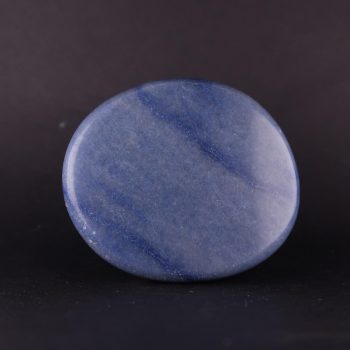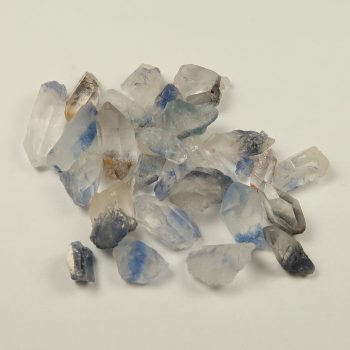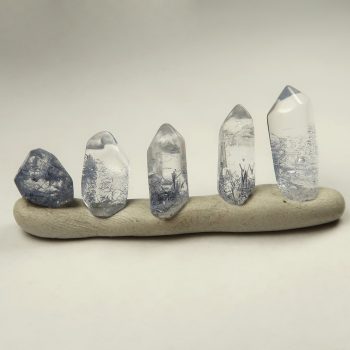Dumortierite
An interesting blue or purple mineral which occurs in a fibrous state.
This stone occurs around the world, in a range of countries. It is an aluminium based borosilicate, similar to Kyanite – both of which are blue and used in the production of ceramics.
In some cases, it occurs as inclusions in Quartz, which are absolutely gorgeous!
Showing all 3 results
-

Dumortieritic Quartz palmstones
£2.00 -

Quartz with Dumortierite inclusions
Price range: £3.00 through £10.00 -

Quartz with Dumortierite inclusions (Polished)
£10.00
Appearance, Uses and History
This stone occurs around the world, in a range of countries. It is an aluminium based boro silicate, similar to Kyanite – which is also blue, and also used in the manufacture of ceramics.
It was named after Eugene Dumortier, a 19th century French palaentologist.
It has been sold by less scrupulous sellers as Sodalite or Lapis Lazuli – and it is understandable how the untrained eye could be mistaken, when the stone is polished. Even the larger crystal structures of the stone could be mistaken if the colour is right.
It is sometimes referred to as ‘Dumortierite Quartz’, but this is an inaccurate name. Dumortierite Quartz specifically refers to pieces of Quartz with inclusions of Dumortierite. These pieces are quite desirable to collectors, as blue Quartz is surprisingly rare, despite the commonness of Quartz itself.
Dark blue pieces are the most common – usually with patches of other colours, light blue or grey being the second most common.
It is a hard mineral and can be cut for jewellery – although limited knowledge of the stone and the rarity of high quality pieces mean cabochons etc can be quite hard to find, with faceted stones being even rarer.
Locales
Austria, Brazil, Canada, France, Italy, Madagascar, Namibia, Nevada, Norway, Peru, Poland, Russia and Sri Lanka.
Mineralogy
Hazards and Warnings
Dumortierite contains aluminium and is listed online as toxic relatively often. However, aluminium cookware exists – I suspect you’d have to eat powdered Dumortierite for it to be an issue.
Almost all rocks, minerals (and, frankly, almost all other substances on earth) can produce toxic dust when cutting, which can cause serious respiratory conditions including silicosis.
When cutting or polishing rocks, minerals, shells, etc, all work should be done wet to minimise the dust, and a suitable respirator or extraction system should be used.
Translations
Arabic:
Hindi:
Portuguese:
- dumortierita
Bengali:
Indonesian:
Punjabi:
English:
Italian:
Russian:
- дюмортьерит
French:
- dumortiérite
Japanese:
- デュモルティエライト
Spanish:
- dumortierita
German:
- Dumortierit
Korean:
Thai:
Gujurati:
Mandarin and Traditional Chinese:
Urdu:
